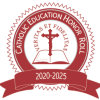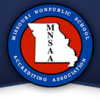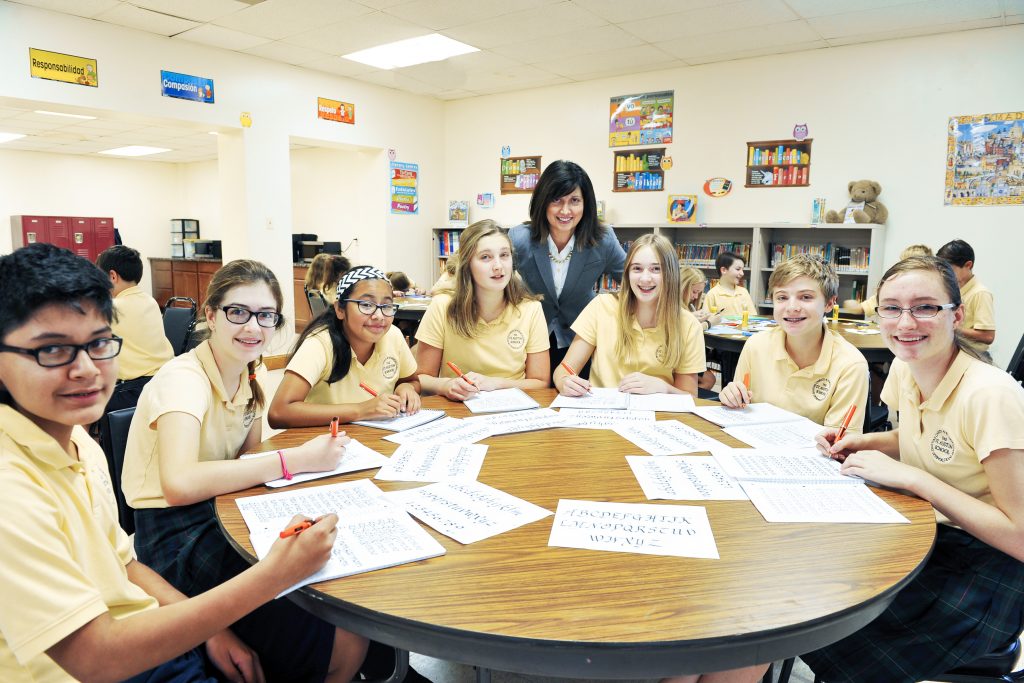
At The St. Austin School, each child is encouraged to develop socially, intellectually, and spiritually at his optimum pace. We strive to involve each child in active and independent learning. Emphasis is placed on the essential skills of literacy, numeracy, and religious instruction. These are worked out through a varied and exciting curriculum which we believe is both broad and balanced and is intended to help children engage with the greatest ideas found in the best books.
The academic program at The St. Austin School is outlined comprehensively in our 2023-24 Prospectus.
Our school is organized into Forms for Lower and Middle School:
PreK
Our PreK program utilizes a Montessori approach that includes Religious Instruction, Story Time, Penmanship, Literacy and Numeracy activities, and activity-based introduction to Science, History, Music, and Arts & Crafts.
Lower School
Form I: Kindergarten
Form II: First Grade
Form III: Second Grade
Form IV: Third Grade
Form V: Fourth Grade
Middle School
Form VI: Fifth Grade
Form VII: Sixth Grade
Form VIII: Seventh and Eighth Grade
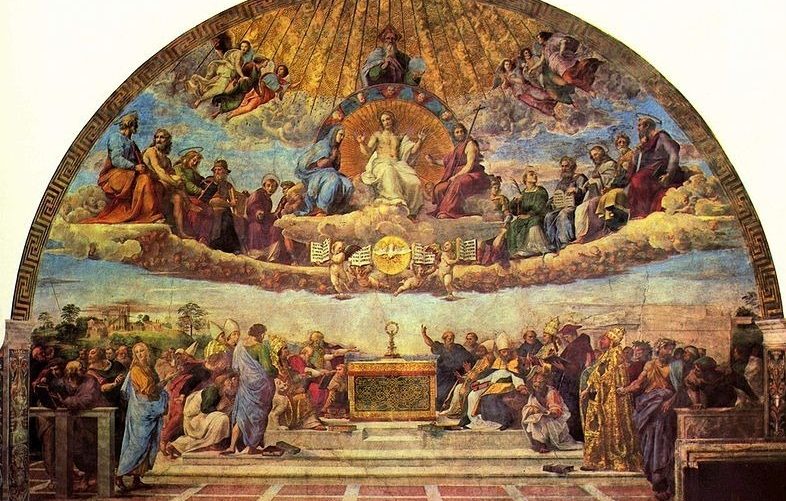
Pictured Above: The Disputation of the Holy Sacrament by Raphael.
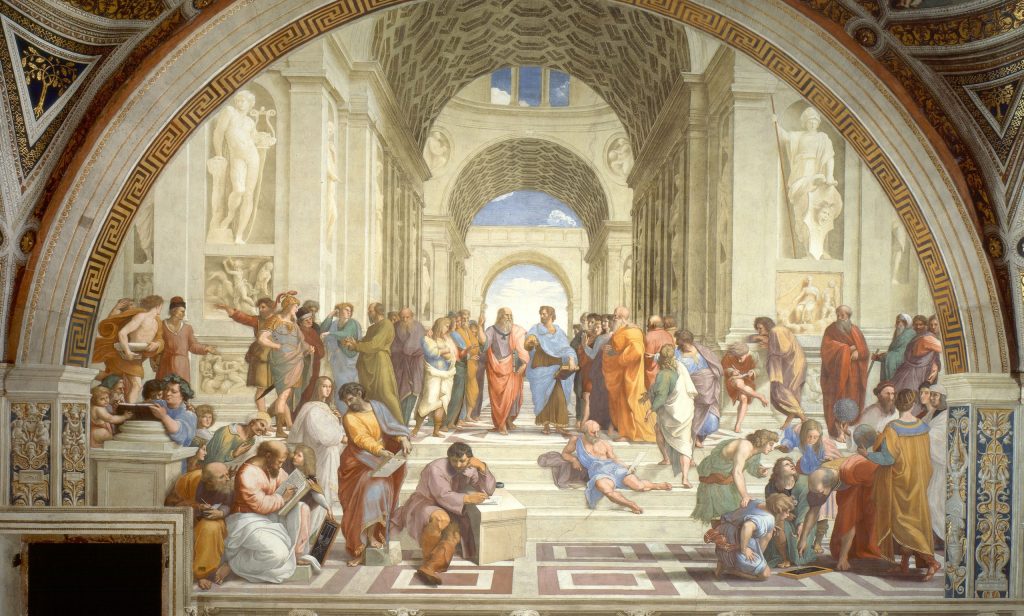
Pictured Above: The School of Athens by Raphael.
Core Subjects
Additional Subjects
Student Achievement
Core Subjects
Religious Instruction
St. Anselm defined theology as fides quaerens intellectum – an active love of God (fides) seeking a deeper knowledge of God (intellectum). Religious Instruction provides the foundation for understanding that will allow the lifelong process of living the Catholic Faith. The tools for this are the Holy Bible, the Catechism of the Catholic Church, the Faith and Life Series and thorough understanding of the Church’s Sacraments and Ceremonies, especially Holy Mass. In middle school, knowledge of Hebrew is used to help the students develop an understanding of the Israelite culture by learning the language, which will open their minds to Scripture, thereby helping them to better understand it.
English
A sound knowledge of grammar and the ability to express oneself clearly and articulately, both orally and in writing, are the goals of the English program.
Literature
Reading good books is not only central to teaching English but touches on all subjects. The best books are used across the curriculum in all subjects. These books engage the mind, delight the soul and provide food for the imagination. A good book makes every topic come alive; therefore, the best literature is the most important element in instruction.
Latin
Latin is the language of the Church and is the foundation of our culture. Since it is essential for the fullest participation in the liturgical life of the Church as well as providing excellent mental training and assisting the understanding of English, Latin vocabulary, song and prayers are taught from Grade 1 onward. Latin grammar is introduced in conjunction with the study of English grammar to help the children understand how the science of grammar works.
History and Geography
History is presented in a chronological perspective in order to help the students develop a historical sense as well as a real and profound understanding of the people and events which have shaped human culture. Geography covers all aspects of the study of the earth, its physical attributes, climate and its peoples. Map work is incorporated into the subject.
Mathematics
Mathematics is a tool relevant to everyday life. The early grades concentrate on measuring, estimating, working with shapes, money, number patterns, graphs, tables and number calculations. The later grades concentrate on rational numbers, geometry concepts and Algebra. Students should have completed Algebra I by the end of Grade 8.
Science
Nature study is the basis of the science program. This includes observation, classification, use of the scientific method, and recording data findings in a scientific manner. Our aim is that children will develop flexible, inquiring minds, a scientific approach to problem-solving and be led to a sense of wonder and gratitude at God’s creation.
Additional Subjects
Spanish
Spanish is one of the most popular and useful languages today. The students will read, translate and understand words, genders, and associated articles; greetings, both formal/informal; and verbs in varying tenses. They will engage in dialogues and conversation.
Music
The music program will include music appreciation as well as introduction to technique and performance. Singing and liturgical music will have pride of place. In addition, music plays an important part in the life of the school at Holy Mass and special celebrations, especially at Christmas and Easter.
Art
Students will explore the techniques and processes for the production of visual arts, the principles and elements of different art forms, and apply the design process in their own works of art. They will interpret and evaluate works of art, and understand visual art as it relates to other disciplines and in historical and cultural contexts.
Drama
The drama program provides instruction in the performing arts, as well as the production of a play at the end of the year. Students will develop skills in acting methods, story-telling, set construction, character development, and improvisation. Ultimately, students will learn how they can inspire the world through acting.
Physical Education
Year-round outdoor play will be emphasized. Students will develop motor and movement skills, team-building skills, and enjoy physical activity which provides challenge, social interaction, and self-expression.a
Student Achievement
Standardized Testing
The St. Austin students take standardized tests each spring. These scores allow us to see our students’ academic achievements in comparison with students nationwide. Our scores are outstanding. We score in the top 11 percent of those who take the Stanford 10 Test. In Math, we scored in the top 9 percent and in Reading, the top 10 percent.
Science Fair
Every year, The St. Austin School holds an annual middle school Science Fair. The top three scoring projects are invited to be entered in the St. Louis Regional Science Fair each April. This fair allows the best science fair projects from all the schools in the St. Louis metropolitan area to compete for ribbons and special awards. Hundreds of excellent projects are entered. Of our competing projects, all have placed in a variety of categories.
Regional Geography and Spelling Bee
Each year St. Austin students compete with their classmates in school geography and spelling bees. Our students have qualified for regional bees and represent St. Austin well displaying their hard earned knowledge and healthy competition.

